#laetro
Text
Enjoyed today’s Laetro session. The first ones that are three minutes we were challenged use our left hand or non dominant hand by Dave Zaboski.


0 notes
Text
Saloni Sinha: Merging Concept, Visual Styling and Experimentation
Senior Experience Designer at Frog Design, Saloni Sinha unravels the unique step-by-step approach she applies to her designing and illustrating process. Starting out with experimentation, she progresses to conceptualising and ends with visual styling to produce what she considers the effects of her designing roots.

Known for illustration, Saloni Sinha is a designer by day; illustrator by night; bassist on weekends and a full time dreamer. Her approach to design is rooted in experimentation, conceptual thinking and visual styling. Saloni’s illustration style is often inspired by exaggerated reality, nature and outer space. As Senior Experience Designer at Frog Design, her works have included visual direction, design language systems, branding and UX flows amongst others. Meanwhile, being a music lover, she often contributes her designs to the indie music scene.
ORDER A CUSTOM ILLUSTRATION

Q. Could you please elaborate on what your role as Senior Experience Designer at Frog Design involves and related projects you’ve worked on?
Saloni Sinha: My role at Frog Design varies from project to project. I’ve been lucky to find myself involved in different domains like enterprises, B2B or B2C markets. I’ve also had the opportunity to work on visual direction, design language systems, branding, UX flows and involve myself in pursuits of organisation initiatives from time to time.

Q. Which artist’s works do you look up to and what do you adopt from them in your approach?
Saloni: I get inspired by many different artists all the time. Some of my favourites over the last few years are John Jurez, MC Escher and Maria Tuiriana. John’s subjects are always out of this world. His usage of colours and minimal look are some things I try to adopt in my style as well.
Likewise, I’m always in awe of and puzzled by Escher’s genius mind. I am not sure if I’ve adopted any of his approaches but it always mesmerises me. Maria has a dark yet adorable and humorous style, which is always a delight to see. I feel quite inspired by her use of organic and traditional mediums, which is a good reminder for me to turn to transitional media as much as possible.

Q. Having worked on various projects across branding, UI/UX, typeface, posters, etc. how do you adapt to the diversity in their nature and demands?
Saloni: Having gone through the foundations of design and having the opportunity to experiment with different disciplines in my design education has helped me adapt to different domains. Yet I feel that most of the time it’s the willingness and staying curious that helps you adapt.
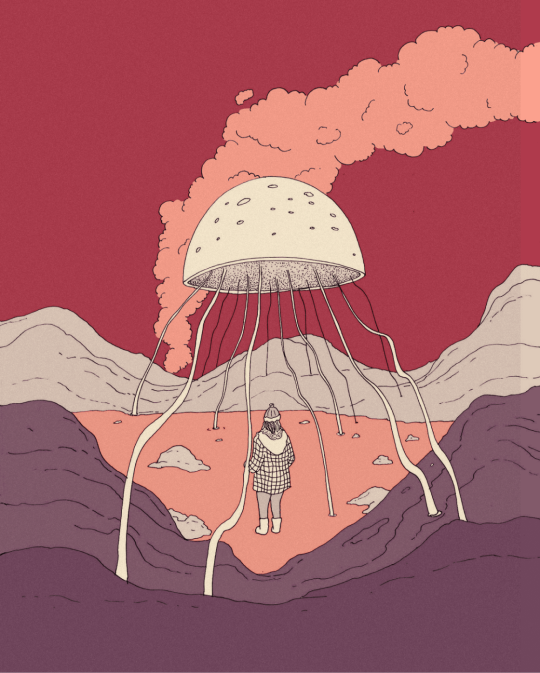
Q. Could you kindly elaborate on why you choose visual styling, conceptual thinking and experimentation as the roots of your work?
Saloni: l usually start with experimenting, which is sort of an open field to play around and have fun. At this stage, I’m not bothered by the end result. Once you have one or two good concepts, you can start to refine and build something intuitively. Lastly, you decide which sort of visual styling would best suit the concept. Normally, I tend to play around with colours and typography to decide a mood. I don’t believe in a fixed process; I feel you can iterate and keep an open mind.

Q. Which have been the noteworthy clients and projects you’ve worked for and could you highlight some valuable experiences you’ve had in particular?
Saloni: Some of the projects/clients which are special two me are:
Saptan Stories – a 7-week long collaborative arts event hosted by Aardman Animations (UK) in collaboration with British India. I was really happy to be hand-picked among 7 artists from the UK and India. Every artist had to interpret a story written by the masses. It also felt personal in some sense as I had just gone through a break-up and each line coming in felt like what I had experienced, though with a mix of fantasy in it.
Tailor & Circus – I had the opportunity to create a set of design prints for their underwear collection and also to design a sustainable packaging hamper. They’ve been very inclusive about their audience. They are bold in their approach and sustainable, so I feel proud to be associated with their work. I thus got to see my illustration in a different medium, which is always exciting.
Album Cover for Amogh Symphony ‘IV’ – The artwork for their album turned out to have a very different take in terms of the look and feel, unlike conventional metal band covers. The art was conceptualised with the title track ‘Birds’, which emphasised feminine freedom and connection with mother Earth.
l usually start with experimenting… Once you have one or two good concepts, you can start to refine and build something intuitively. Lastly, you decide which sort of visual styling would best suit the concept.

Q. In terms of technicalities like colour scheme, lighting, proportion and the likes how do you describe your style and approach?
Saloni: I usually tend to work towards a minimal style. I spend more time sketching and inking before I start to digitise. In most of my work, I try to keep the use of colors to a minimum of two or three while colouring digitally. In my opinion, two to three colours bring good balance and harmony. I add depth by adding some tints and tones while sometimes playing around with unconventional proportions to bring surprise.

Q. If you could determine one thing about the field of art today, what would it be and why?
Saloni: Art can be more immersive with upcoming technologies. People can experiment and combine different mediums to create enriching experiences.
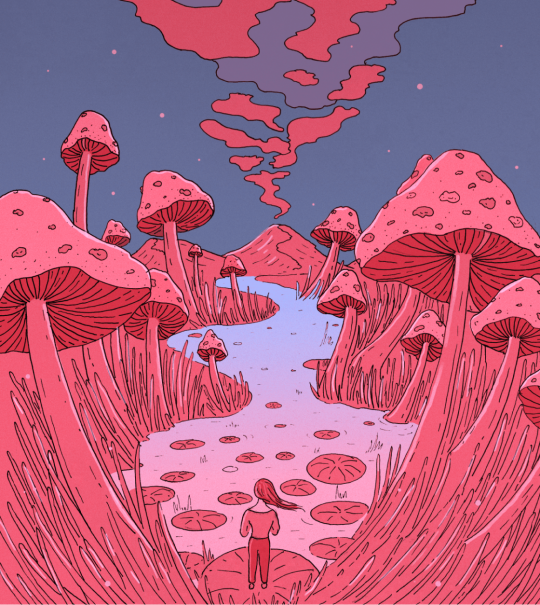
Q. What particular efforts or ways do you take to understand and achieve what is expected by a client?
Saloni: Understand clients thoroughly, making sure they are involved in each stage of ideation. At the same time, give yourself time to refine your ideas. Ideally, you don’t want to show them the entire process of brainstorming since it may expose them to half-cooked ideas and confuse them. Once you have a few directions for them to choose from, you can funnel your design sooner.
Sometimes it will also depend on what kind of client you get – there might be clients who are particular about something, while some give you more liberty. As an artist, though, you can take that lead in direction while still keeping the brief in mind.

Q. How do you choose subjects and the manner of conceptualising them in your illustrations?
Saloni Sinha: My subjects keep changing from time to time. Earlier, I was heavily inspired by the metal culture and dark fantasy, so I naturally made a lot of punk/spooky drawings. Nowadays, with my growing interest in space and nature, I draw a lot of inspiration from the two and amalgamate them with everyday life and fantasy.
Q. What kind of projects do you dream to do and what draws you to them?
Saloni Sinha: I’d love to work on a project related to sustainability and nature conservation that can make an actual impact on our planet. And, for fun, I’d love to make album covers for some of my favorite bands as I love music.
2 notes
·
View notes
Photo
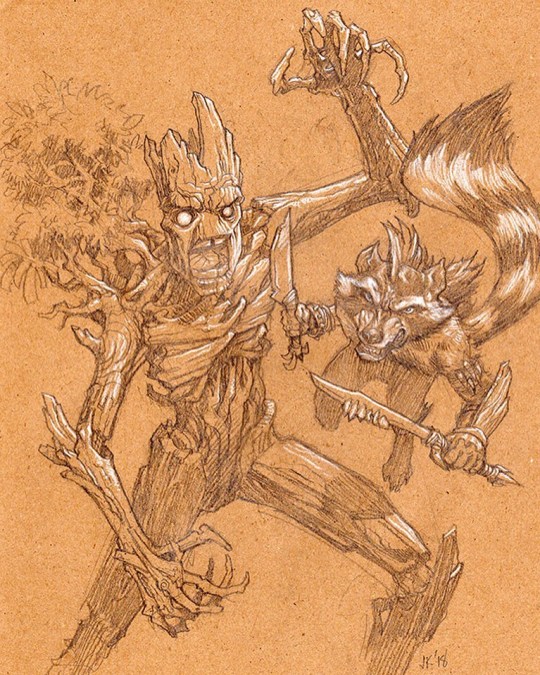
#iamgroot For awhile I was doing #Hominids versions off popular #popculture #characters There wasn’t much I needed to change about these two. #rocketraccoon #groot #guardiansofthegalaxy #guardiansofthegalaxyvol2 #mcu #marvel #marvelcomics #marvelcinematicuniverse #marvelstudios #art #artwork #artistsoninstagram #pencildrawing #pencil #pencilsketch #laetro https://www.instagram.com/p/CQUVq9YjFES/?utm_medium=tumblr
#iamgroot#hominids#popculture#characters#rocketraccoon#groot#guardiansofthegalaxy#guardiansofthegalaxyvol2#mcu#marvel#marvelcomics#marvelcinematicuniverse#marvelstudios#art#artwork#artistsoninstagram#pencildrawing#pencil#pencilsketch#laetro
6 notes
·
View notes
Photo

So many currents moods in these drawings 😆 But at least I got to enjoy a great life drawing session with #laetrodrawingclub first! Here is a mix of 2-, 5-, and 15-minute poses with the lovely @libraryafterdark modeling… #figuredrawing #laetro #gesturesketch #lifedrawing #pencilsketch #blackwingpencil #graphite #fabercastellmetallicpencils #colerasepencils #derwentpencils #art #whiskeydogstudio https://www.instagram.com/p/CXdAb0ELd6M/?utm_medium=tumblr
#laetrodrawingclub#figuredrawing#laetro#gesturesketch#lifedrawing#pencilsketch#blackwingpencil#graphite#fabercastellmetallicpencils#colerasepencils#derwentpencils#art#whiskeydogstudio
1 note
·
View note
Text
Was able to catch part of Laetro’s online session after my horse lesson. A 10 minute, a 20 minute and then the color is 40 minutes (2-20s). @laetro_ #gestures



0 notes
Text
Brie Schmida: Visual Storytelling Through her Illustrations
Visual Storytelling is an art on its own. Several factors determine the effectiveness of the narration of an artwork, such as composition, lighting and colours. And narrating a story solely through a character is even more challenging. Brie Schmida, a visual storyteller, character designer and illustrator, reveals essential factors that aid in successful visual narration and brilliant character design.
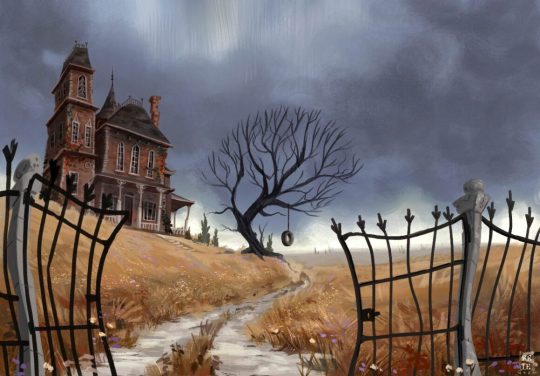
Based in California, United States, Brie Schmida is an illustrator, visual storyteller and character designer. Her immense love for storytelling and ardent passion for art can be witnessed through her colourful, quirky and jovial artworks. Graduate from Academy of Art University in B. A Illustration, Brie is currently working as a freelance illustrator.
ORDER A CUSTOM ILLUSTRATION
Q. What inspired you to embark on this journey to become an illustrator?
Brie Schmida: I probably wouldn’t have become an illustrator if I hadn’t been in a horseback riding accident in my early teens. The resulting spinal condition took eight years to cure, and I turned to one of the only non-active things I could do, art. It kept me sane. This is such an enjoyable process that now that I am well, I never want to stop.

Q. What are some of the highs and lows that you’ve faced as an illustrator and visual development artist?
Brie Schmida: Health issues were undoubtedly a significant hurdle. On bad days, I remember laying on the bed, trying to draw. Apart from this, I believe that I am way too hard on myself. I constantly remind myself that others are not privy to my thoughts and might not view my work with similar criticisms. One of the best moments so far has been attending my first Lightbox Expo. I had the opportunity to meet several renowned artists and even made some fast friends there. The artist community is so welcoming and supportive.
Q. What does your daily routine look like?
Brie Schmida: I live on a farm, and so, there’s always something different going on in every season! I work for six to eight hours every day, with occasional snuggle breaks with baby goats or my cat Pickle. Since leaving pieces unfinished irks me, I sometimes spend a little longer on my work. I am not a night owl at all! Once 5 pm rolls around, I go for a walk, enjoy dinner with my family, an episode of a BBC drama and a nice book before bed. On weekends I work in the garden, visit my grandparents, and do various farm activities, namely, snuggling baby goats.
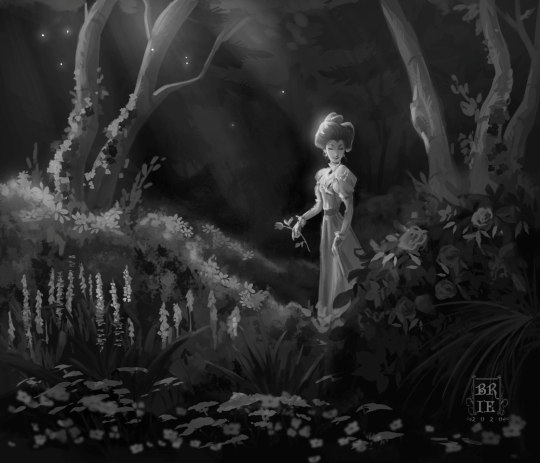
Q. What are some of the critical factors in visual storytelling through illustrations?
Brie Schmida: Outside of critical things like composition, colour, character design, emotion and such, it is essential to have either a bit of whimsy or a bit of nostalgia in the piece. People are drawn to the artworks that they can relate to or those that capture their imagination. Visual storytelling is about creating an entire narrative that can stand on its own without a description. It is about capturing a single moment. An illustration must make the audience wonder about the character and story. Storytelling is all about the anticipation of what’s to come.
Q. The characters that you design portray fascinating personalities and narrate a story on their own. How do you achieve this? How can one subtly portray a character’s personality through design?
Brie Schmida:A character’s personality is a complex combination of their inner thoughts and feelings. This is portrayed through the character’s expression, body language and clothes. If a character is shy, they might not adorn bright, vibrant, attention-grabbing garments. If a character is grouchy, they won’t be sketched with a warm, inviting smile. These can often be understood through keen observation of people around us. There’s a lot you can tell about a person without speaking to them at all.

Q. How vital is a composition in a visual narrative? Could you kindly share a few techniques to improve composition?
Brie Schmida: Composition is extremely important. This is a vast field with an ocean of knowledge, and therefore, I cannot claim to be an expert since I am yet to explore all of its immense depth. However, I often emphasise the importance of ‘value to create a focal point’, ‘contrast’, ‘line of action’ and ‘use of colour’ to my students. These are a few basic techniques to improve composition. I recently learned about the W Composition used since the Renaissance, and it blew my mind! I also explored the aesthetic principles of Shape Composition, which was equally exhilarating.
Q. What kind of story do you like the most?
Brie Schmida:I love stories which sport solid character development and storyline. Pretty visuals are only secondary. One of my recent favourite animated films that sported excellent character development, storyline and stunning visuals was Klaus. I also enjoy stories with historical elements where I can learn about a new culture or historical event. And, of course, those stories that completely surprise you with their ingenuity. Inception is probably that film for me.
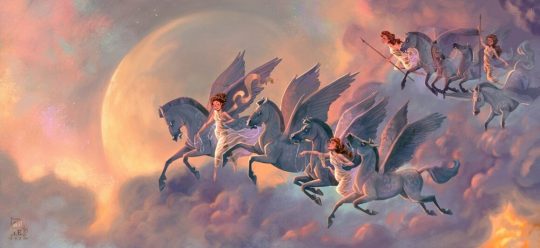
Q. What is the one thing that you really look forward to doing someday in your career?
Brie Schmida:Apart from always drawing and designing, I would really like to direct one film. Just one. I know exactly which film it will be, and I really hope that day comes. Since I began my career during the pandemic, I am also looking forward to interacting with a team in person.
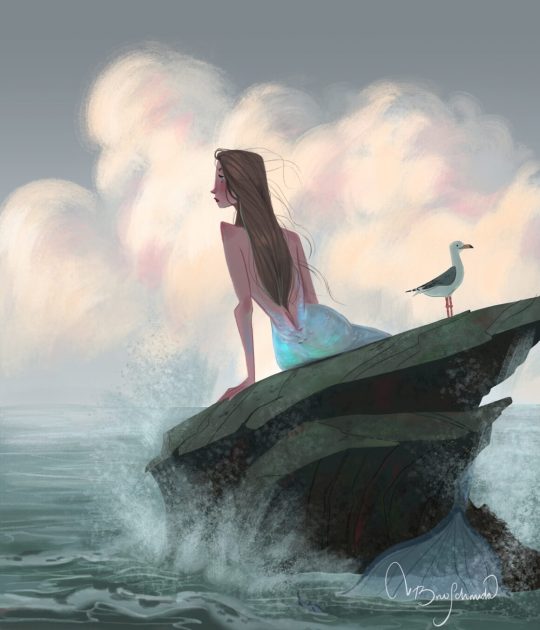
Q. According to you, what are the key features of an ideal client?
Brie Schmida: In my opinion, an ideal client can either explain clearly what they want or is willing to brainstorm with me to get there. It is difficult when the clients are vague about their preferences and get frustrated when the end product doesn’t turn out as they envision. An ideal client is someone who is excited about the project and open to suggestions. It is fun to work with a passionate person.
2 notes
·
View notes
Text
David Edward Byrd: Inspiring “Wowie-Zowie” for Over 50 Years
With a career that spans over half a decade during the art, music and technological revolution, David Edward Byrd has developed iconic posters and illustrations associated with the best of the rock and theatre era.
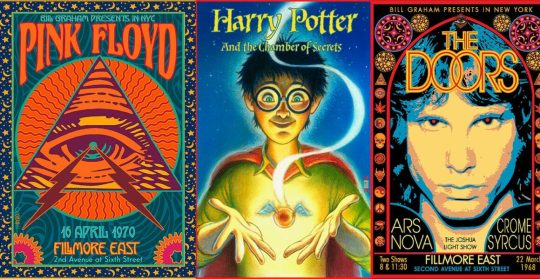
David has been creating posters since his days at The Fillmore East in NYC where he created the famed 1968 Jimi Hendrix poster now in the collection of MOMA, NYC. As well, he created the poster for The Rolling Stones 1969 Tour, TOMMY by The Who, The Grateful Dead, & the legendary 1969 Woodstock Poster. He quickly moved on to Broadway, where he created images for Follies, Godspell, Jesus Christ Superstar, Hot L Baltimore, The Magic Show, & Little Shop of Horrors amongst many others. He was Sr. Illustrator at Warner Bros. Consumer Products for 12 years where he worked on everything from Bugs Bunny to Harry Potter. He has had Retrospective Shows in Los Angeles, New York & Seattle. He now lives in the Silver Lake area of Los Angeles with his husband of 39 years, Jolino Beserra, a renowned Mosaic Artist.
ORDER A CUSTOM ILLUSTRATION
Q. Any reason why you chose to illustrate for 60s rock bands in particular?
David Edward Byrd: I was the poster artist for the Fillmore East in NYC from its opening on 8 March 1968 to 27 June 1971 when it closed for good. At this same time, I was also creating posters for the Broadway Theatre (“Follies”, “Godspell”, etc.). As Rock Posters have a much higher profile than Theatre Cards, I chose that area to illustrate. Also, Theatre is about THIS play right NOW, while 60s Rock is about 60s Rock in general.

Q. What kind of changes do you see when you compare the posters that were created in the 60s to the ones that are created today?
David: The rock poster artist EMEK is a great example of the younger generation’s expertise in the art form (see “Coachella”). Whereas, David Singer is an example of the “Old Garde” moving on to create new imagery (see “Moon Alice”). I still create more East Coast imagery, I think . . .

Q. One of your Hendrix posters is ranked among Billboard’s Top 10 Rock Posters of all time. What was your thought process/ inspiration while you created the poster?
David: Before coming to Manhattan in 1967 I had worked as a freelance Architectural Draughtsman, so I was familiar with the tools of that trade, and thus I decided to apply this craft to the 1968 Jimi Hendrix Experience poster. I created Jimi’s & his band-mates hair using a hexagonal grid with small circles on the grid representing cosmogenic pixels that one might perceive after ingesting certain popular chemicals of the time (see “Acid”). Each small circle was drafted with a drop-bow compass on the center point of the hexagonal grid.
A laborious process, but worth the time . . .

Q. The poster you created for the Woodstock Festival was rejected because it was too risque in 1969. Do you think it would have received a different response if it was designed today?
David: Absolutely — an entire sexual revolution has occurred over the last 50+ years. Ironically, the nude female in the center of the poster was copied from the 1847 painting “La Source” by Jean Dominique Ingres, which seemed a perfect symbol for a poster representing “An Aquarian Exposition” (the “Water Bearer”). But the Wallkill City Council thought otherwise (exposed breasts & pudenda a no-no). I had a similar experience with the NY Times treatment of my “Tommy at the Metropolitan Opera” full-page ad in the Sunday Times, which featured a nude Tommy rising into Pinball Heaven — the Times editor chose to paint a crude Black Marker Jockstrap over his very modest genitalia, alas.
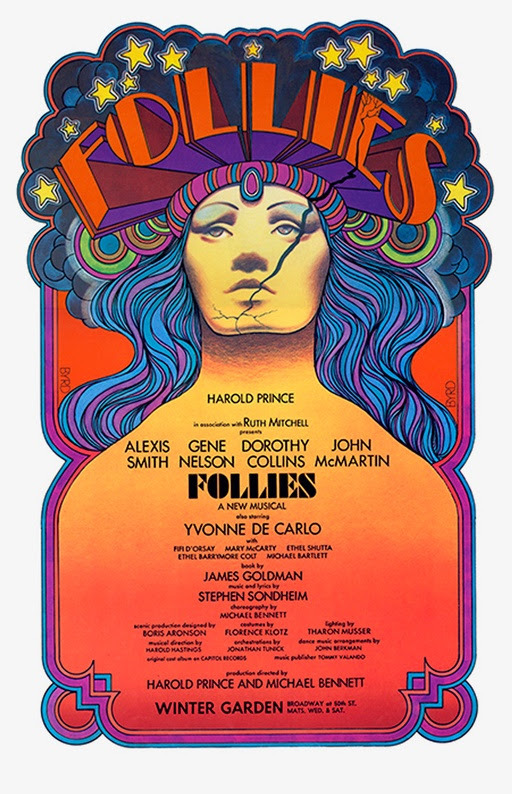
Q. What would you describe interacting with so many rock artists like? Any favorites whose company you enjoyed?
David: Manhattan & San Francisco are light-years apart both culturally & artistically. The West Coast artists created Psychedelia and Neo-Nouveau and are due to the many encomiums they have received for this. David Singer and I were friends and we traded posters. David created the most Fillmore West posters (60 total) of any artist on the planet. For me, his posters are the Apex of the West Coast work. Victor Moscoso influenced my design sense with his vibrant close-value posters (see “Sopwith Camel”) and continues to do so today.
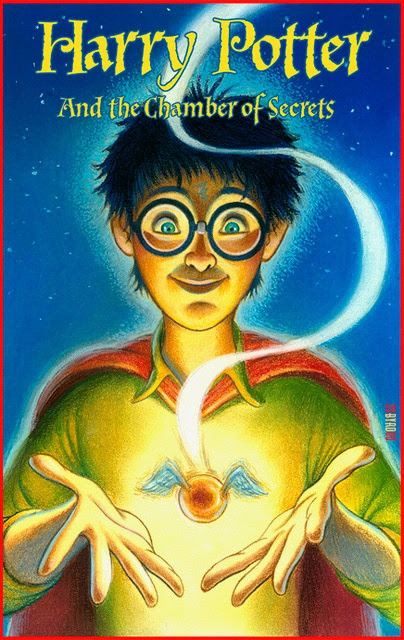
Q. Can you describe your experience at Warner Bros. How were those 12 years different from working elsewhere?
In 1991, I took the position of Senior Illustrator at Warner Bros. Creative Services, which I held till 2002 • Besides creating illustrations, backgrounds and style guides for all the Looney Tunes & Hannah-Barbera characters, I got to create commemorative plates for The Franklin Mint, souvenir posters for the Batman series of films, style guides for feature films such as Space Jam, The Wizard of Oz, and television shows such as Friends, The Cartoon Network and Scooby-Doo • My department was responsible for the Bugs Bunny Postage Stamp, the first cartoon character on a U.S. Postage Stamp • I created special signed pieces for The WB Studio Stores Galleries based on The Masterpiece Series style guide art that I painted in 1999 • I also did a great deal of work on the style guides for two of the Harry Potter films: Harry Potter & The Chamber of Secrets and Harry Potter & the Prisoner of Azkaban.
One rarely sees the Graphic Collections of major museums on display, so being part of a museum collection as a poster artist does not put one on the creative map, so to speak. But it is a nice thing to tell one’s sweetheart.
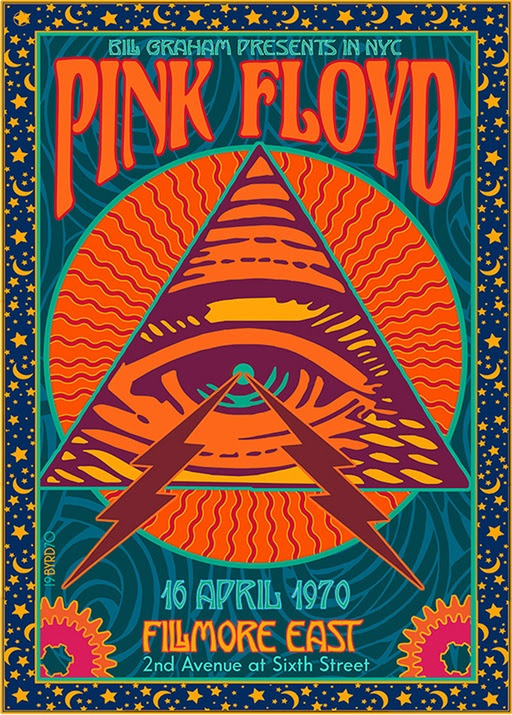
Q. Your work is displayed in 23 museums at the moment, including the Louvre in Paris. Do you find it a rare accomplishment considering you are an illustrator and not a painter?
As I have often said if I had remained a painter I probably would not be in any Museum at all. But this is not for me to know. One rarely sees the Graphic Collections of major museums on display, so being part of a museum collection as a poster artist does not put one on the creative map, so to speak. But it is a nice thing to tell one’s sweetheart . . .
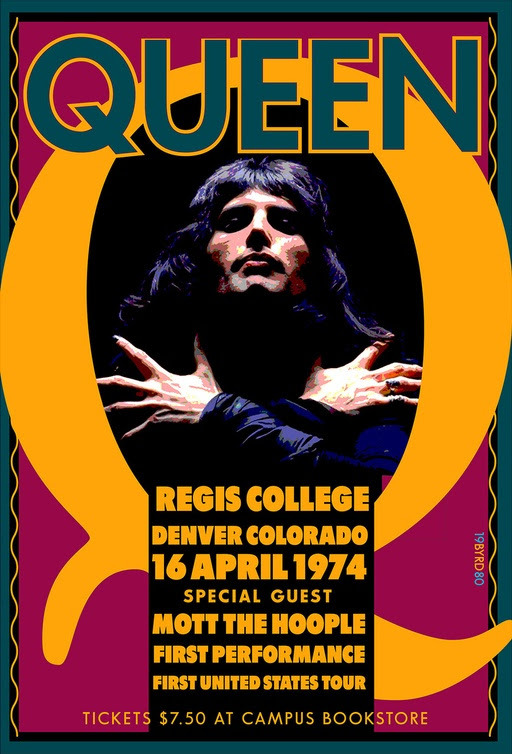
Q. From Fillmore East to Broadway to Warner Bros, how has your style evolved over the years?
My art-chops improved immensely in the last 20 years. I hope it is somewhat evident. My work was hit-or-miss in the beginning but things have gotten better of late.
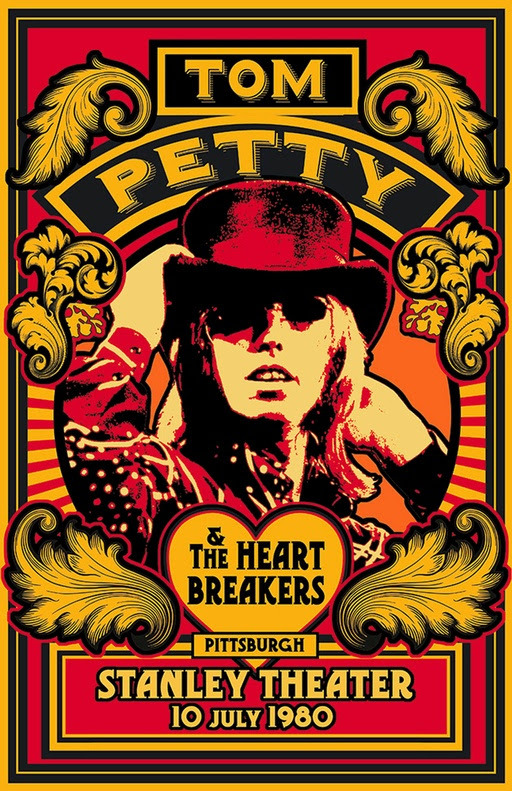
Q. Can you name some of your favourite posters which you have worked on?
“FOLLIES” 1971
“HENDRIX EXPERIENCE” FE 1968
“BOWIE” Carnegie HALL 1972
“QUEEN” 1st Tour 1974
“PRINCE” DNA 2013
“TOM PETTY” 1980
“NY DECO EXPO” 1974
LED ZEPPELIN FE 1969
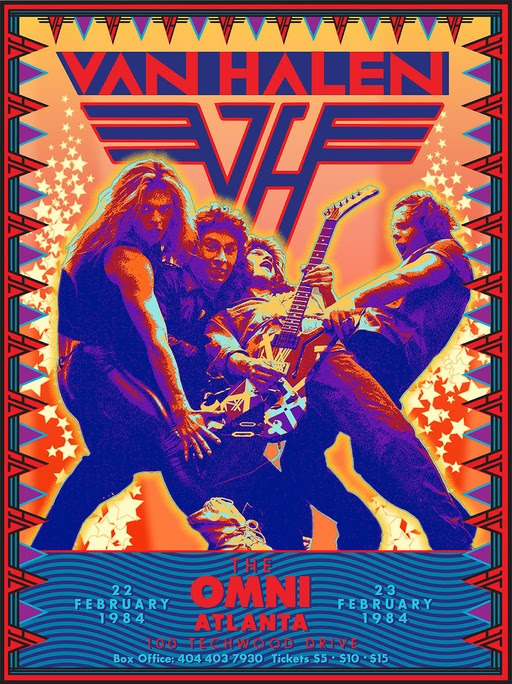
Q. What is your process like when coming up with an illustration or a poster?
1.) Collect Reference & inspiration in Folder.
2.) Create rough pencils for scanning.
3.) Collect possible Fonts.
4.) Build rough designs on Mac
5.) Choose 1 main color and build up from that
6.) Proof printing
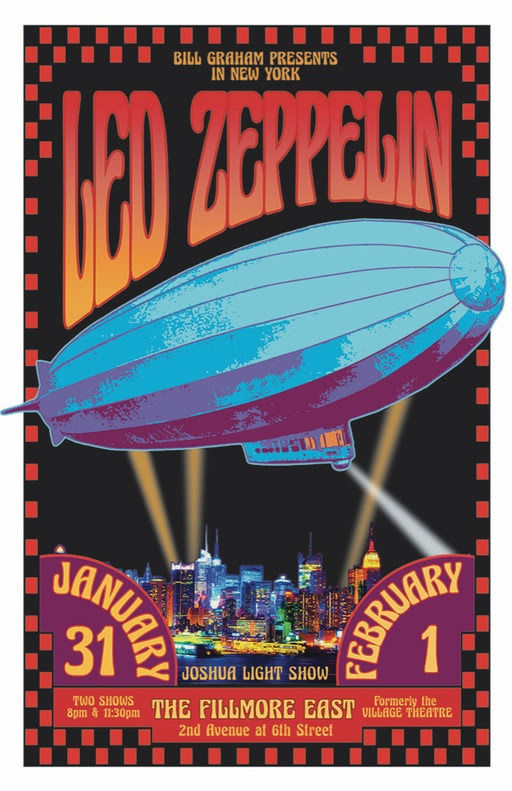
Q. What software do you use to create your illustrations?
ADOBE SUITE (PhShop; Illustrator; InDesign) + Typestyler
Q. Lastly, what do you always aim to achieve through your illustrations?
Eye-Fun • Immediacy • Gotcha • Who-Is-This-Guy? • Wowie-Zowie
3 notes
·
View notes
Text
Mike Morris: Animating to Move Audiences Emotionally
Animation artist, Mike Morris, describes how in spite of technological innovation furthering technical skills and abilities, being able to draw audiences emotionally lies at the heart of animation.

Mike Morris is a Director and Storyboard artist of animation. His past projects include globally popular animated series like The Simpsons and Disney’s Duck Tales (2017) amongst others. With a personal love for classic and action adventure animation, his list of past clients ranges from the likes of timeless Disney and Warner to the more contemporary DreamWorks.
ORDER A CUSTOM ILLUSTRATION
Q. Could you please describe your creative process when starting a new project?
Mike Morris: Starting a project, I always look for the meaning behind it – “Why tell this story? What message is it going to resonate with an audience? What are the ideas and emotions at play?” Very broad strokes. I find it’s best for me to work from the general to the specific as things progress.

Q. Could you tell us more about the process and experience of animating for a series as popular as The Simpsons?
Mike: I got to The Simpsons around Season 17 or 18 while The Simpsons Movie was being produced. Of course, by then the process had been running quite smoothly with a crew that had been working on it for quite some time. Well, for those who hadn’t been absorbed by the movie, the process they use is very highly classical animation based and hasn’t changed all that much outside of going digital since the late 1980s.
I got in with a large group of new talent, so we learned all about how to layout a scene from a storyboard; how to not tip a joke and how to act in character. Also, we were working on a paper at first, so that was a cool experience. It’s the last show standing that habitually still does character layout work– that’s the main reason the show has such a high acting quality compared to shows that try and cram everything into storyboards, then spend a ton of time later on fixing everything that’s broken.
It was great working with characters like the Simpsons family and favourites like Mr Burns and Dr Nick. It was like hanging out with friends.

Q. What is the most important skill-set and quality you think an animator should have?
Mike: The ability to perform, to entertain first and foremost. You can be a wonderful artist, can draw to the finest technical detail, but if you can’t evoke emotion from an audience with your portrayal of your character, you’ll lose your audience.
So being aware and cognizant of what your character is thinking and feeling at all times is super important. Drawing ability, yes. Technical ability, yes again. But if you’re a natural entertainer, boom, you’re in a good spot. I would also point to having a very disciplined work ethic because, no matter what shortcuts technology gives us, the animation will always require a lot of effort to make it good.

Q. What characteristics do you appreciate or expect in a client you choose to work with?
Mike: There is always appreciated for a client that understands what they want and can verbalise it directly while still being open to ideas and furthering concepts, instead of someone who just sets you on an “I’ll know it when I see it” sort of creative desert without any real direction. Someone who understands collaboration and the exciting opportunities it can provide.

Q. Could you name your most enjoyed projects and what about them excited you most?
Mike: I really enjoyed working on a storyboard animatic called “Race around the Moon” I did for Toon Boom’s training materials, in that I was given creative carte blanche to do what I wanted to from worldbuilding to character creation and from script to animatic screen. That was fun.
You can be a wonderful artist, can draw to the finest technical detail, but if you can’t evoke emotion from an audience with your portrayal of your character, you’ll lose your audience.

Q. What kind of projects are you looking to get involved in at this point?
Mike: Animated Series/Features.
Q. How do you achieve synergy between you and your client to arrive at a mutually desired result?
Mike Morris: In my opinion, a hard and fast rule doesn’t exist for how to achieve any sort of synergistic relationship between an artist and client. It’s unique to the pairing, like any relationship. The best thing you can build is to trust and trust in several aspects really. Both creatively and practically. I feel the only real way to achieve this is with a certain amount of humility and child-like excitement for a project that spurs ideas on to greater heights as they mature into something tangible.

Q. What are your ‘weapons of choice’ when choosing tools to work with?
Mike Morris: I use Toon Boom’s Storyboard Pro the most often of anything, followed by Toon Boom Harmony, Celsys’ Clip Studio Paint and Adobe Premiere for editing, among various other software.

Q. Could you tell us which animated works do you look up to as an animator yourself and why do you admire them?
Mike Morris: I absolutely love classic Disney and Warner Bros Looney Tunes animation. There was just so much heart and emotion invested in those classic Disney films, coupled with a mastery of the craft (having largely innovated most of it themselves) that is hard to find elsewhere. That “Disney Magic” as it were. Also, you’d be hard pressed to find as much clever wit as are in those classic Looney Tunes shorts.

Anything Mike Maltese, Chuck Jones, and Maurice Noble worked on was gold on film. The funniest gold you could ask for. I love action adventure animation, some anime; I’m a sucker for sword and sorcery stuff and cool sci-fi and Kaiju/Robot fight movies. I love anything that I will as an audience member become invested in emotionally. That’s what I look for, pure storytelling with real motivations and stakes for the characters involved. That is what excites me and those are the works I admire.
1 note
·
View note
Text
Roshan Gawand: Expressing Human Forms
Roshan Gawand speaks to us about the beauty of human figures and the approach behind expressing them.

Roshan Gawand is an Illustrator based in Navi Mumbai, Maharashtra. He has completed his Graduation Studies from L. S. Raheja School of Art as a commercial artist and finds inspiration in real-life experiences.
ORDER CUSTOM ART
Q. How would you describe yourself and your style as an illustrator?
Roshan Gawand: I am an Illustrator based in Navi Mumbai. I did my Graduation Studies from L. S. Raheja School of Art as a commercial artist. I spent most of my childhood in a village and lived in an ordinary family. For me, a painting not only puts color on a canvas but is an expression of the artist. I keep expressing my thoughts through different artworks. I love to explore different color schemes. As an artist, I never stop making myself better from all angles.

Q. Could you elaborate on the distinct kind of color scheme you adopt and what role does it play in your work?
Roshan Gawand: To me, colors are like a new way of living life, so I try to incorporate that happiness, joy, and a new way of life in my paintings. Human eyes are easily drawn to bright and vibrant colors, so I try that aspect in my artworks. People have started accepting these color patterns nowadays.

Q. What significant or memorable projects have you worked on so far and elaborate on one or two of them from brief to execution?
Roshan Gawand: I have worked on many projects and have loved them. All the projects were briefed nicely. One of them is the Swaraj Tractor. Their work process and coordination with the designer are very cool. Even the timeline for each project was given perfectly.

Q. What kind of projects are you most excited to do further and why? What would be your dream project?
Roshan: My work shows Indian traditions and speaks about Indian culture. I would love to work on projects with more creativity and innovation. I enjoy working on human figures. If there’s a project where I can show cultures around the world and the characteristics of each human from a different continent, I would love to do it.

Q. How do you choose your characters? What inspires and influences you to decide subjects to illustrate?
Roshan: I was born and brought up in the village. Even now, I live about an hour away from my hometown, so I have a warm spot in my heart for my native place and it inspires me. Whenever I see something interesting, I try to take a snap as a subject for my next work.
Most of my character inspirations come from the actual scenes and experiences around me. For some ideas, I try to search for some inspirations on Pinterest. It gives me the ability to play around with the ideas that I carry in my mind.

Q. Most of your characters seem to project bold, expressive personas. What makes you choose that form of depiction?
Roshan: I try to capture the magic of a particular moment. The human form has a beauty of its own. When you achieve expression of its gestures, your work turns out better. For example, in the lockdown period, I saw a man shaving his beard on his veranda. I observed his body gestures – the shape of his folded legs and razer in one hand, mirror in the other – and felt like drawing him. It’s all a game of negative and positive spacing which attracts me the most to depict a particular persona.
“The human form has a beauty of its own. When you achieve expression of its gestures, your work turns out better”

Q. What do you think is the relevance of digital art in current times and how do you see it growing in the near future?
Roshan: The future of digital art is in that it can be continued as an instrument to communicate with people, express ideas and emotions to make changes in society. Digital artists should use their talents to make positive changes. Artificial Intelligence is a field that is very important in digital art. Nowadays, we are connected with everyone through this digital medium. Digital media also provides a lot of opportunities for artists to showcase their talent.

Q. If you could time travel into the past or future, which era would you choose as an illustrator and for what reasons?
Roshan: If I get the chance to travel back in time, I will go to the time of the European Renaissance, so that I can witness the glory of the art of that period which is highly treasured today and spread over most of Italy and other European countries.

Q. What is your word of advice to those who are just starting out in digital art, from your own experience?
Roshan: My advice to all those who love to create digital art is they must learn Photoshop, Illustrator, and 3D art software. These tools allow you to bring your thoughts on canvas. Before that, however, they should know what roles all these tools play. Also, keep practicing every day – an hour is enough when starting out.
Q. Of all the clients you’ve worked with, which have been your very best experiences and what made them so?
Roshan: One of the best clients I have worked with till now is Tata Motors. They have a different style of coordinating with designers. This client gives me a perfect timeline with minor changes. What else can a designer want!
0 notes
Text
Allison Berg: Colourful Characters Narrating Fascinating Tales
A story can never be compelling without powerful characters. Characters are like wheels in a wagon, the wagon being the narrative. Hence, character design is a vital part of a visual story. Allison Berg, freelance character designer and student of the University of Victoria in British Columbia, explains the various factors that result in compelling character designs.

Allison Berg, 19, is a freelance character designer and a student at the University of Victoria in British Columbia, majoring in Computer Science with Visual Arts as their minor. Berg’s keen interest in arts can be witnessed through her colorful artworks. Their immense love for the Horror genre and storytelling resulted in the webcomic, “After Dark” which can be read in WebToons.
ORDER CUSTOM ART
Q. Can you talk to us about your artistic journey?
Allison: Ever since I was a kid, I have been interested in creating stories and characters. I have always known that the art industry was the place I wanted to be in, but I didn’t start developing my portfolio or sharing my work until just before the pandemic. But since then, I have been hired as a freelance character designer, visual development artist and showcased my work in a book.

Q. Who/what is your muse?
Allison: I enjoy people-watching. My source of inspiration for character designing comes from random people on the streets and in shops.
Q. How did quarantine affect your art and your everyday life?
Allison: Quarantine gave me ample time to reflect on who I was as a person and an artist. I spent countless hours immersed in art, developing my portfolio and style. I also learned a lot about myself and how I choose to identify myself.

Q. Could you kindly talk to us about your webcomic After Dark? What inspired you to create this story?
Allison: Monsters and the horror genre are my main inspiration for the theme of the story. I wished to narrate a tale of two friends who overcome their problems together while also killing monsters. Until I started this project, I never knew that I harbored a love for creating comics, so this project opened up a new realm of possibilities.

Q. What are the critical elements that one must remember while creating a webcomic?
Allison: It is essential to pace yourself. Since it is a webcomic, the frequency of the story updates lies with us, creators, be it weekly or monthly. Don’t burn yourself out trying to get a whole chapter completed in a month, but do plan your comic and the storyline (unless it is a comic strip or gag cartoon; even then, it is good to plan them well in advance). Don’t get into the comic without fully designing your characters, storyline, and scripts.

Q. How does one design unique characters that stay true to the characters’ personality?
Allison: Though it is not recommended to always follow stereotypes, they can provide a helpful guide, if used in moderation, when designing a character. For instance, one wouldn’t make an incredibly shy person dress in vibrant and eye-catching clothes. But remember that you can bend the rules to fit your character’s personality. Think thoroughly about your character and the part they play in your story before you design them.

Q. How important are colours to storytelling? What is the general colour palette for your webcomic, and how did you decide it?
Allison: Colours are extremely important to storytelling as they inform the viewer what emotion they should be feeling. For instance, when a character is angry, that emotion can be communicated in a scene with red lighting as red generally symbolizes anger.
The general color palette for my comic is a combination of green, blue and purple. I often associate that with the color green with terror, and so it resonates well with the theme of my comic, horror. The colors blue and purple symbolize loneliness, despair, and magic.

Q. How do you set the mood for a particular scene?
Allison: Colours play a vital role in setting the mood. If you were to create a sad scene, the color you’d most likely associate it with would be blue. The camera angle is also vital in storytelling. For instance, if a character is supposed to seem superior, the camera should be looking up at the character to make them seem big. Think thoroughly about the specific mood that you wish to portray and play around with colors and composition to create that mood.

Q. Can you elaborate on the role of lighting for mood-setting?
Allison: Lighting is crucial for setting the mood. Horrifying scenes tend to have dramatic and contrasting colors like green or red light, while a lighthearted moment might have soft pinks and oranges.

Q. How would you describe your ideal client?
Allison: My ideal client is someone who knows exactly what they’re looking for and can clearly communicate their wants. Someone who isn’t overly demanding while also providing a healthy amount of challenge and time to work on the project.
0 notes
Text
Ritaban Das: Storyboarding for Effective Storytelling
Character designer, illustrator and storyboard artist, Ritaban Das, elaborates on the significance of storyboarding to effectively tell a story and thus also shares insights from his decade-long experience in animation.
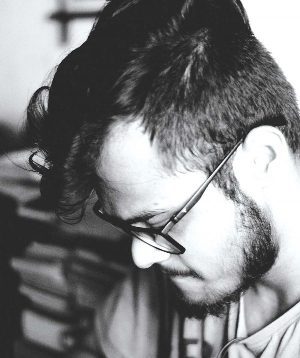
Ritaban Das is a character designer, storyboard artist and illustrator working in the animation industry for the last decade. He’s worked on a wide range of national and international 2D and 3D animated projects for platforms like Nickelodeon, Cartoon Network and Pogo. Recently, he shifted to Toronto, Canada for higher studies, looking to contribute his skills to the Canadian animation industry. He hopes to someday work on his own animated show.
ORDER A CUSTOM ILLUSTRATION
Q. How do you differentiate your approach between the roles of character designer, storyboard artist and illustrator?
Ritaban Das: At the end of the day it’s all interconnected; it all comes down to ‘story’. When I design a character, I start by thinking about what kind of personality the character has and their role in the story. I think about what I’m trying to communicate through the illustration. This helps me to figure out poses and expressions. As I’m drawing, I’m thinking about shapes, proportions and appeal. I also think about the composition of the illustration. When I make storyboards, I’m telling a story in motion by acting out the characters in them.
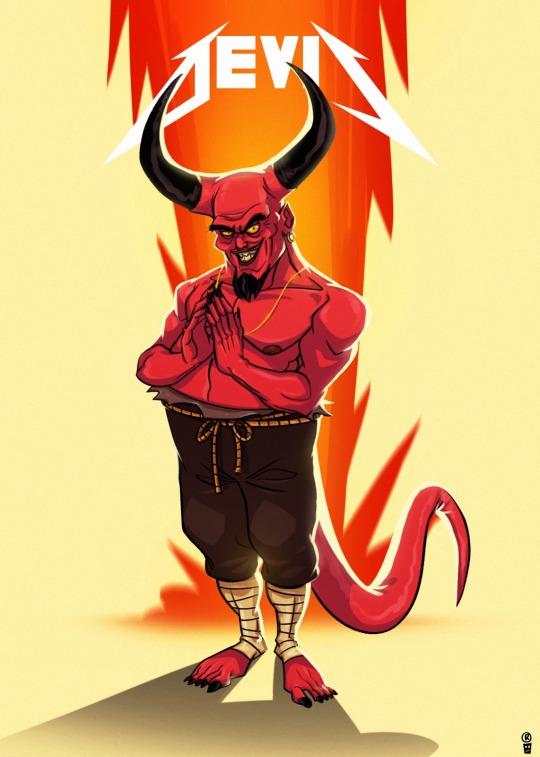
Q. What have been the greatest lessons you’ve learnt professionally and personally in your ten years of experience?
Ritaban Das: Draw what you like and the rest will fall into place. Only you know what motivates you.
Q. How did you find your calling to be an artist and, thereafter, how did you nurture your skills to hone your craft?
Ritaban Das: I’ve been drawing for as long as I remember and I’m always very passionate about it. To be very honest, I sucked at studies and my parents knew that very well. I remember spending most of my time with a box of chalk and slate gifted to me by my father. Like every other child, I also loved to sketch my favourite cartoons. I usually sketched these animated characters on the back pages of all my notebooks and also my classmates’ notebooks. It made me known amongst my seniors for my sketches.
That’s the only thing I was good at which I followed blindly. Honing my craft came from lots of practice. I draw almost every day. I also follow and study other artists’ work. Reading or watching their interviews, where they describe their work processes and the likes, helped me a lot to grow as an artist over the years. I try to open my eyes and ears to absorb everything.
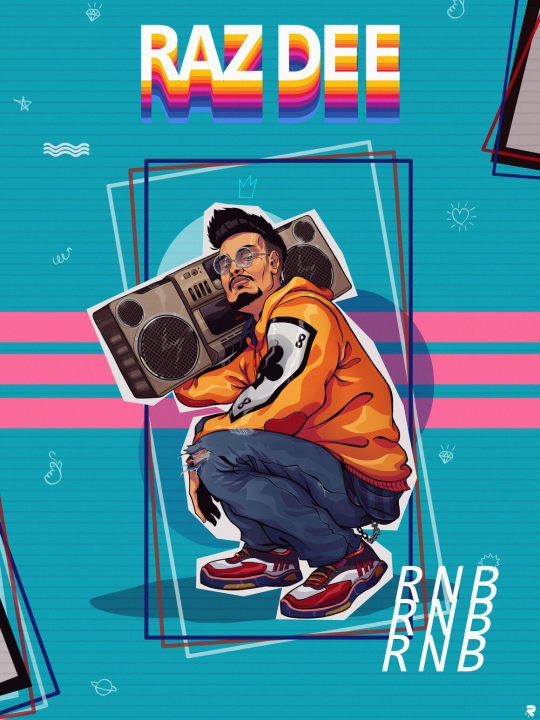
Q. Could you take us through your process of how you envision a character and then execute it practically?
Ritaban Das: Being a Character Designer, most of my work is very much character-driven, blended with humour and very graphical too. I always try to convey some sort of story through every character or Illustration I make. I like to play with various shapes and silhouettes and usually keep things simple.
The character design process is, in a way, a combination of different things. I ask myself ‘Who am I drawing? What is his/her personality?’ I sometimes look at influential artists’ work to get some ideas or even start from a drawing I like and translate it into my style. Then, trying to forget those influences, I often start from scratch with a basic shape such as the face as it determines the rest of the character for me, then the body (this can be a circle, oval or even a pear shape – it all depends on the personality of the character I want to draw).
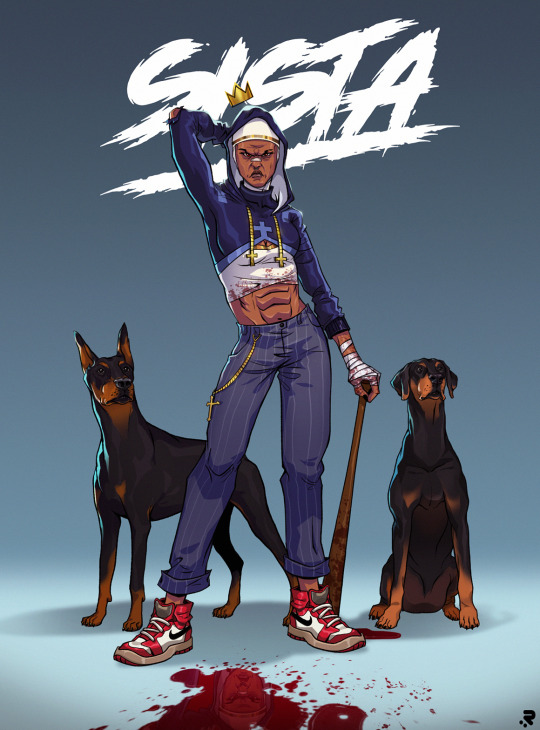
Q. Could you please elaborate on your current pursuit of higher studies and how you came to choose Canada for it?
Ritaban: I completed my studies at Humber College in 3D modelling & VFX and Graphic Design and got a job in an animation studio called House of Cool as a Story artist. I’m working on a very exciting project which will probably start airing next year.
I’ve always been well aware of the Canadian animation industry from the beginning and the kind of projects they do. I worked on a bunch of Canadian animation projects back in India.
We used to do a lot of outsourcing for studios here like Big Jump and Brown Bag Films. Canada’s animation industry always attracted me in terms of work culture, the kind of content they nurture, and the quality they produce, so I want to be a part of it.
“Whether you’re working on a commercial TV spot, web video or film, storyboards are an effective way to quickly tell a story. “
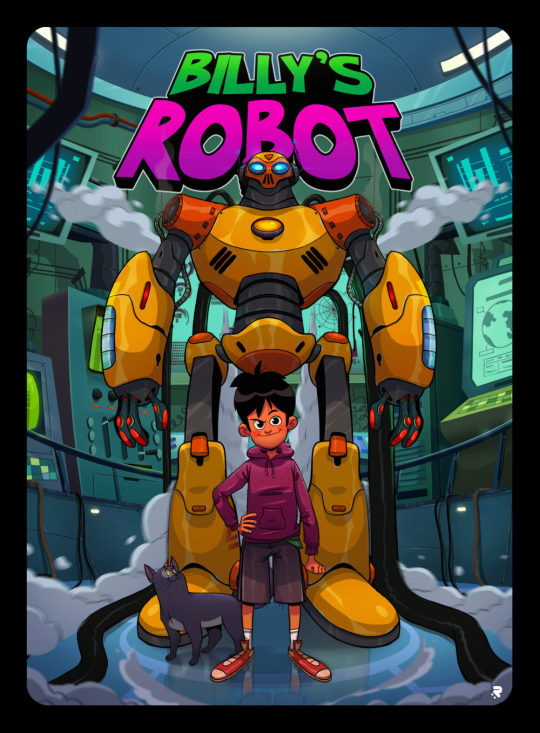
Q. What about the world of animation draws you towards it?
Ritaban: Animation is important because it enables us to tell stories and communicate emotions and ideas in a unique, easy-to-perceive way that both children and adults can understand. Animation has helped connect people throughout the world in a way that sometimes writing and live-action films cannot.
Today, anyone can pick up a drawing tablet and show their ideas to the world. Drawn figures can be funny, sad or serious. It can have a playful, less intimidating feel to it to make the viewer feel more comfortable. Often, it has simply served as a way to make a heart-warming story that makes you think.
Through live-action movies, people can form biases based on the appearance and real-life personality of an actor playing a character. But as an animated character, the character feels like their own being.
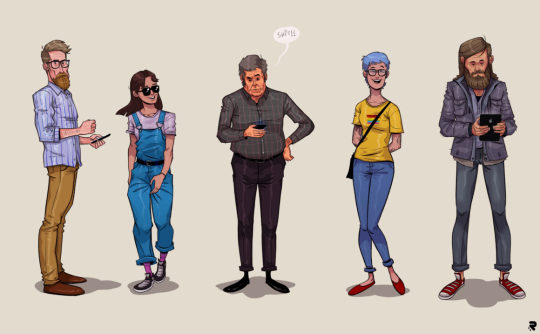
Q. What would you say are the most challenging aspects of working in the animation world and how do you tackle them?
Ritaban: Every project is challenging in different ways. The challenging ones are the projects where clients don’t have a clear understanding of their audience and outcome, goals or don’t have an investment or hierarchy for arriving at a consensus on feedback. The most challenging projects always boil down to size and scope and managing a team to produce the animation. Also, animating subject matter that I’m not interested in is challenging. But at the end of the day, we all survive because we all just love what we do.
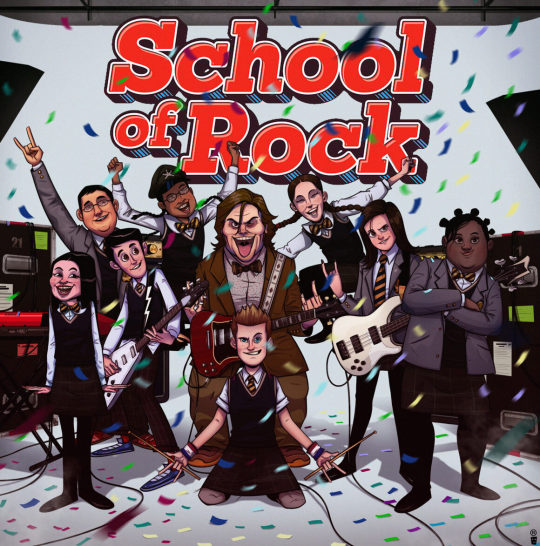
Q. Could you take us through your process of creating a storyboard and highlight its most important aspects?
Ritaban: Whether you’re working on a commercial TV spot, web video, or film, storyboards are an effective way to quickly tell a story. A storyboard is a sequence of drawings that represent the shots planned for video production. It covers all of the major shots, angles and action of your film. The very first step is to read your script and visualise it as an audience would. As I go from scene to scene, I analyse the screenplay and decide how I want each scene to look.
A script breakdown tells you what storyboards you need to create. Then I start doing the rough thumbnails with all the necessary camera angles in Photoshop and chalk out the entire scene I’m planning to do. The important thing is to give anyone who looks at the storyboard a sense of space — where are the objects in relation to the space they’re standing in.
Once I finish locking the scene on thumbnail level, I pitch it to my art director or creative director and take their feedback. After passing the thumbnail phase, I start making the rough staging in Storyboard Pro and work on the required actions and move forward with the scene for the final animation. I might have to rework scenes over and over, combining different elements of the iterations until I finally have what the team is looking for.

Q. What ways do you apply to understand client needs better and thereby produce results that are in sync with them?
Ritaban Das : Whether I work in any studio or as a freelancer, I always listen to what clients need. Listening to your client will help you understand and retain the information you’re already receiving, even if it isn’t a formal meeting. You need to ask questions to identify needs and paraphrase what they say. It helps with clarification and to enhance your understanding of their needs.
Also, I bring new ideas to the table. I don’t hesitate to propose something other than what the client had in mind. You may have a better service in mind and, if nothing else, this again shows you’re listening and attempting to understand your client’s needs. Understanding client needs is one of the biggest challenges of any business but also one of the most important and rewarding tasks.
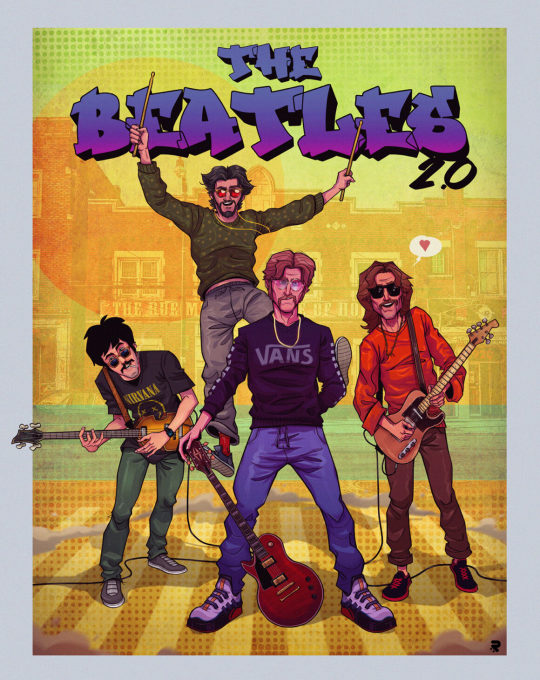
Q. Considering your range of work, could you please elaborate on significant projects and clients you’ve worked for?
Ritaban Das: Over the ten years of my career, I’ve worked on various national and international projects back in India for clients like Nickelodeon, Cartoon Network and Pogo. I’ve been part of the projects like “Camp WWE”, “F is for Family,” “Kuu Kuu Harajuku,” “Evan the Epic,” “Penn Zero: Part-time Hero,” “DC Superhero Girls,” “Cloudy with a chance of meatballs” (series), “Rhythm Warriors” (series-in production) and other numerous animated TV shows.
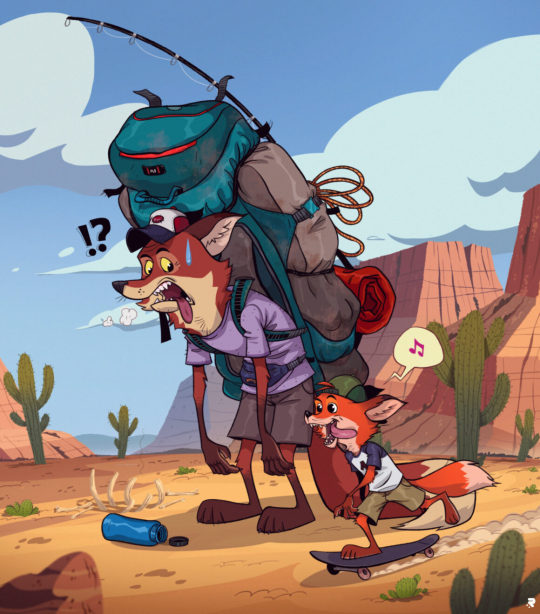
Q. According to you, in what direction should animation be exploring and progressing now?
Ritaban Das: Animation is an incredibly versatile medium that is widely used in many different forms today. Animated films are big business nowadays. Companies such as Disney have had enormous success producing animated children’s films for many years. Animated characters such as The Simpsons and The Flintstones have long been familiar visitors to our television screens. The future of animation looks to be on an interesting journey as the quality of films is becoming higher and higher. Most people would now aim for a 4k film. Also, they’ve been experimenting and coming up with new techniques of animation.
One of the interesting ones is Mix Media, a technique that Disney has been experimenting with for a few years is mixing CGI and traditional 2D animation. The idea is to create an animated film using CGI and then to draw over each frame to give it a hand-drawn quality. The computer gaming industry is also pushing the boundaries of what is possible with animation, leading to the creation of some extremely realistic game footage. Computer game animation has certainly come a long way from the 2D graphics of early arcade games.
Now computer game animators can build environments and objects that react to the player’s actions. The animation looks set to continue delighting audiences for many years to come. With animated films continuing to rise in the blockbuster charts, capturing hearts and imaginations, there is no sign of this genre coming to an end.
0 notes
Text
Archer Dougherty: Experiment to Eliminate Fear of Failure
Archer Dougherty strongly disbelieves in nurturing a “signature style,” instead of encouraging artists to constantly experiment with thought, concept, visual language and so on. Mostly self-taught while social media was still in its infancy, she dove into an exploratory approach to develop her skill and vision through a mixture of learning from failures and little successes. Not trying ensures one is not a failure but neither a success, she realised.

For over ten years, Archer Dougherty specialised in design and 2D work, drawing being her favourite mode. Though she studied sculpting and print-making at her local state university, Archer trained herself technically in contemporary art through emerging social media. She loves football, hiking, Shiba Inus and dreams of having a farm populated with mini animals.
ORDER A CUSTOM ILLUSTRATION
Q. What got you started as an artist and what path did you take thereon to grow and evolve at your craft?
Archer Dougherty: It may sounds cliché but I’ve drawn it ever since I can remember. I always gravitated toward art, so my career was simply a natural outgrowth of that relationship. I tried to pursue a formal art education but couldn’t afford to go to a proper brick-and-mortar art school and the internet wasn’t much of a thing in the late ’90s. So, I attended my local state university and studied sculpting and printmaking there but was discouraged from focusing on anything narrative.
After academia, the internet was gaining traction and the backlash in my mental space resulting from an education that didn’t ignite any real passion launched my true artistic training. Books, an infant YouTube, Facebook, and an even newer Instagram put me in touch with contemporary art which was being done in the ‘now’ and seemed important. I began my technical training through these channels and have been flying along this learning curve ever since.

Q. What would you say is your signature style in your works and what is your process to achieve it?
Archer Dougherty: I don’t relate to the phrase “signature style.” I think it is used way too often to catalogue for branding purposes, which has a use in the larger market, but it should not be a “goal” in itself for any artist in terms of the artistic process. When younger students are bombarded with art through social media, as they are now, and see profile after profile showcasing a very polished and specific personal visual language, they grow walls around their thinking, making them single-mindedly pursue the idea of a “signature style.”
It inhibits growth and takes up way too much mental space in anyone’s head, especially for those starting. I believe in pursuing ideas and experiments, technical and conceptual stepping stones and failures, and that your language will mature as you make mistakes and learn what appeals to you both spiritually and intellectually and what does not.
Simply copying or attempting to imitate a style to follow someone’s career arc will end up making you feel like you have to wear a suit that no longer fits, though it’s what everyone has come to expect. The way my art looks and feels has come through years of absolute and abysmal failures at every technique and visual language imaginable while also recognising those small successes which add up to a rich and fulfilling personal output.
It is a massive additive compilation of preferences in art history, literature, movies, comics and illustration. These preferences are arrived at simply by trying new things all the time. A lot of artists are afraid of failure but they don’t realize that failure isn’t even a thing until you try. If you don’t constantly try, you won’t be a failure but neither a success. You won’t be anything at all.
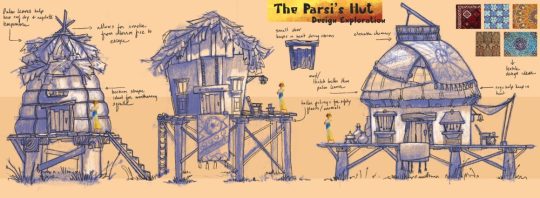
Q. What subjects, mediums and tools do you most like to work with?
Archer Dougherty: I sort of work with everything. My current technical preferences are oil on board, traditional, Procreate and the iPad digital. I prefer environment design and experimenting with colour psychology on my iPad. When I paint in oils, I prefer symbolist portraiture.
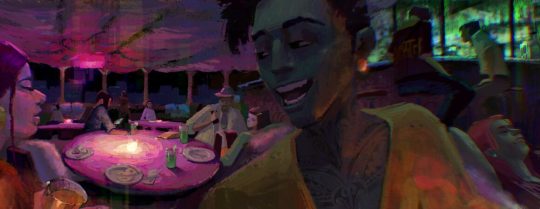
Q. What do you suggest artists and clients both should keep in mind to work together efficiently?
Archer: Communication and transparency. Understanding the other party’s priorities is essential so that both can understand each other’s point of view and reach a solid mid-point.
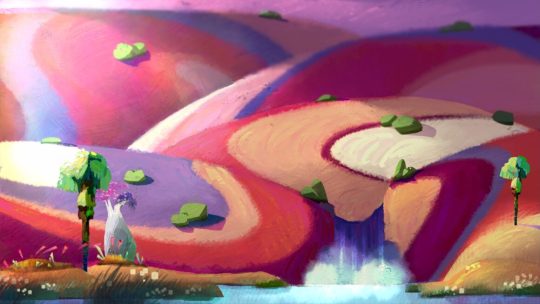
Q. How do you achieve a sense of 2D realism, symmetry and depth across your works?
Archer Dougherty: I’ve put myself through a decade of learning to ingrain the fundamentals of things such as an approach to realism, value structure, anatomy, light, form, mass, composition, colour, etc. I use those learnings to create from my mind when I want to. Actual symmetry is utilised in a lot of art, native art and, I suppose, one could say a great composition utilises a form of visceral symmetry.
If you don’t constantly try, you won’t be a failure but neither a success. You won’t be anything at all
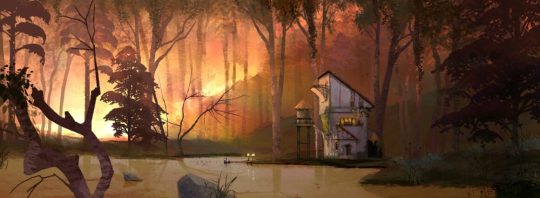
Q. What kind of projects are you currently working on and what kind are you looking to work on in the future?
Archer Dougherty: My projects vary greatly, depending on my mood. When I die, I will have so many unfinished works that my family won’t be able to sell any of them. In terms of future projects, I have many animated shorts and self-published printmaking collections mulling around in my head. Narrative painting projects and the likes, too. Pinpointing one and beginning is ninety percent of the work.
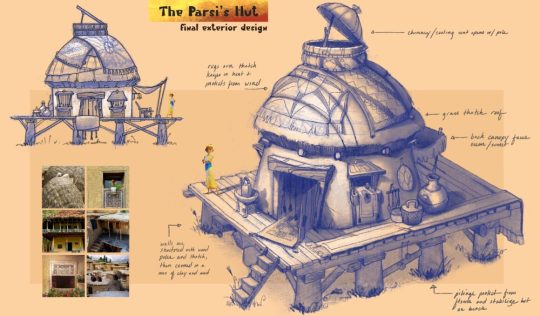
Q. Could you please highlight some of your most notable works and why you find them noteworthy?
Archer: I have a singular notable work that no one has seen. In my opinion, it is the culmination of years of introspection, practicing self-awareness and reflection, learning largely academic techniques and then learning to be alright with abandoning them when it suited the work. It is the result of self-discipline and self-abandonment and a study of the essence.
It is the one piece in which I can say I was fully immersed, mind and body, from beginning to end and it is mine in its entirety, called “Metempsychosis: The Transmigration of Souls”, an ink, oil, shellac and wax medium on seven panels across seven feet. I’ll get it framed one of these days.
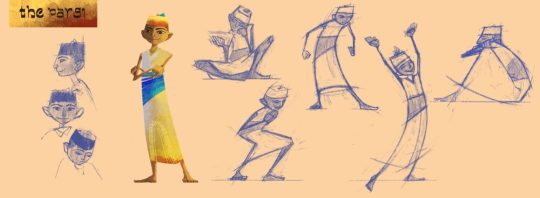
Q. What has been your greatest insights as an artist, with time?
Archer Dougherty:
1. Discovery – that I didn’t have to look or feel or make art like anyone else to make great art was possibly this discovery.
2. Cross-discipline learning is the greatest asset you can have to make richer and fuller art throughout your life. Study the sciences, literature, poetry, humanities, etc.
3. My penchant for the “big questions” allowed me to pursue my visual language on a level that both challenged and fulfilled me. I used the thoughts surrounding these questions to ask more questions rather than be plagued by a lack of answers.
4. Art is the reflection of a thing, not the thing itself.

Q. Who has been your favourite clients to work with and why?
Archer Dougherty: Modern Eden Gallery in San Francisco remains one of my top favourites. They are generous, truly care about their artists’ wellbeing and prioritise good relationships. They are good people. Dave and Brett from Laetro have quickly made the top of the list, as well, through their generosity, vision, intelligence, and communal priorities.
I also loved working with Magnetic Dreams Animation Studio – the same adjectives tend to apply to the people who make my top clients list. I feel that communication, a mutually beneficial relationship, and empathy are important in any client relationship.
0 notes
Text
Penelope Gaylord: The Art Advocating Change
Penelope “Peng-Peng” Gaylord and her empowering representation of women has been cresting in this industry for the past 13 years. She talks about how she works on art that has an ‘emotional connection’ with the audience and leaves an impact. The zealous fellow aims for more experience in children’s books and creating change in ‘representation’.

A freelance character designer and illustrator based in Los Angeles, Penelope Gaylord co-founded Identity Comics Studios and has worked with various renowned companies including Imagine Entertainment, Penguin Random House, Crunchyroll, and DC Comics. Her sole focus on the character, upshots into the creation of an illustration that stands out. Not letting, not attending a formal art school become a disability, Penelope turned observation into experience, clearly visible in her work!
ORDER A CUSTOM ILLUSTRATION

Q. Could you describe your primary illustration style? What do you specialize in?
Penelope: I love putting fun and positivity into my art. I work to make my art have an emotional connection with the audience, even if it’s just a small one. I take a lot of influences from current and past animated movies, especially Disney and Anime.
Q. With over 13 years of experience, could you tell us a bit about your core skills and relevant expertise?
Penelope: I’ve had to teach myself and learn from peers and art professionals with regards to my art. It’s been a long and slow road, but it’s what I’ve had to do since art school wasn’t an option for me years ago. So when I get asked technical questions about art, I’m kind of a dummy on it. I know what I like to see so that is what I bring out in my work. It has taken me years to figure that out for myself, and I’m always constantly learning. Having said that, I guess my core skills are character concepts, and I try to bring personality and life into every one of them.

Q. Tell us about your process when creating illustrations. How do you approach concept development?
Penelope: When I’m trying to come up with an illustration, I usually start with what kind of emotion am I trying to evoke between my illustration and the audience it’s meant for. I try to tell a quick story with it so it’s a lot of internal processing before my pen touches the screen. My art is very character-driven so my focus is always on the character first, then everything else afterwards.
Q. How do you develop work when catering to a project outside your signature style?
Penelope: So far I’ve been very blessed with projects that approach me because they want to see my take on their characters/stories. A lot of the projects I’ve worked on recently have been extremely generous in letting me play in their sandbox, so to speak. But early on I’ve had to adapt to existing styles and nothing gets you there better than practice. Lots and lots of practice.

Q. Where do you draw inspiration from when creating work with no source material?
Penelope: Since I wasn’t fortunate enough to attend any formal art schools/colleges, I’ve had to learn from animated movies and shows, comics, and other artists around me. These things are a constant source of inspiration for me when I’m creating things with no source material. I know what visuals appeal to me so I draw from those to create what I would want to see. And then, of course, good ol’-fashioned research is a must when creating characters that have never existed before.
Q. Tell us a bit about Identity Comics Studio and the work it produces.
Penelope: ID Studios is a small, tight-knit group of creators that consists of myself, Jerry Gaylord who is my husband, and Bryan Turner who is a great friend and collaborator. We started this back when we all used to live in Maryland, born out of a need to find like-minded creatives in an area that wasn’t particularly artsy.
Our work has somewhat evolved since we got together some 15 years ago, starting with producing our comics to now all being in animation. But the one constant that has been our main goal since its inception is to create characters and stories that reflect the diversity that we see in our faces and the lack thereof in the media that we grew up with.
We have all since moved out to LA to work in animation and we are still creating and pitching stories with diverse casts and stories that reflect our own experiences. It has been said before, but we do want to be the change in representation that we wanted to see when we were young, that kids now can have an even more colorful future. That’s not just on-screen, but also behind the scenes in lead roles.
“There are so many diverse faces around us all the time, but the media we consume rarely reflects that for us. It’s hugely important to us that people can see themselves in roles of leadership and power and strength – be the hero in stories instead of constantly being a sidekick, or worse the oppressed or the villain. And the older I’ve got, the more I’ve been focused on looking at the people behind the scenes producing the content. It’s rare to see people in charge that look like me and I think that needs to be changed.”

Q. As the co-founder of Identity Comics Studio, what are your insights on providing value to your clients?
Penelope: Whatever work that our crew puts together, you can pretty much bet that it’s gonna have a little piece of us in it. Our faces will likely be part of the characters, our cultures will likely make it into our stories. We can’t help it, our cultures are part of our identity and we bring it to every project we do. It’s our unique experiences and diverse perspective that we bring to the table, along with our dope art skills of course. Eyyy!!
Q. What are your thoughts on diversity, inclusion, and representation within the pop culture art space? Do you think an artist has the responsibility to influence social causes?
Penelope: I think we all have a responsibility to use whatever platforms we have to bring about positive changes. It doesn’t matter if you’re an artist, an administrative assistant, or an executive – you should be the positive shift that you’re looking for. Representation is something that I harp on all the time, as do the rest of my ID Studios crew.
There are so many diverse faces around us all the time, but the media we consume rarely reflects that for us. It’s hugely important to us that people can see themselves in roles of leadership and power and strength – be the hero in stories instead of constantly being a sidekick, or worse the oppressed or the villain.
And the older I’ve gotten, the more I’ve been focused on looking at the people behind the scenes producing the content. It’s rare to see people in charge who look like me, which needs to be changed.

Q. Having worked on a few extremely popular franchises, which projects stand out for you the most from your career?
Penelope: Having the opportunity to draw a Captain Marvel Little Golden Book is probably my proudest project to date. I can see how much a book with a female superhero lead meant to small children. I also see how important it was for parents to be able to share that with their kids because the parents are from my generation or a little bit afterwards.
We didn’t have these types of books when we were small, especially for us little girls. We never saw ourselves as superheroes saving the planet or stopping the bad guys. But when the parents would show me how excited their kids are to read the book or tell me how they’ve read it so many times that the book has fallen apart, that let me know I was doing something right.
Q. Are there any other areas outside of comics and animation where you would like to apply your creative skills?
Penelope: I enjoyed drawing children’s books, I’d love to someday make my own. I’ve dreamed of drawing covers for some new crop of Babysitters Club books in my art style. And I’ve gotten a little taste of doing some toy designs, I think it would be fun to design more toys – see kids play with my dolls and figures.
Q. Bonus – You’re a superhero for 72 hours. Who do you pick and why?
Penelope: An existing one? Wonder Woman – no doubt, no question. Go around to heads of governments and tell them to get along and protect their fellow humankind. Haha!
#PenelopeGaylord#laetro#laetroartists#whosbehindit#startup#art#commission#digitalartwork#artwork#digitalart
0 notes
Text
Phil Jones: From Cartoon to Photo-realism
Animator and painter, Phil Jones originally trained as a traditional artist. However, being open to digital means earned him the rare opportunity to design graphics for military units including the Navy SEALs and Special Forces.

Phil Jones is an illustrator/painter/cartoonist based in Sarasota, Florida. At one time he was an animation artist for Disney Studios in Orlando, Florida and also a graphic specialist for an Army Special Operations aviation unit based at Ft. Campbell, KY. Now he can be found leading fun but inexperienced painters at Painting With a Twist.
ORDER A CUSTOM ILLUSTRATION

Q. How would you describe ‘Phil Jone’s style’ and what is your process of achieving it?
Phil: My work can be anything from cartoonish to somewhat photo-realistic. The realism style I paint in requires a lot of time and focus as I tend to be more of a perfectionist when painting “realism.”

Q. What was it like working as an artist with an Army Special Operations aviation unit? Could you please expound on that project?
Phil: I was assigned to the same unit featured in the film “Black Hawk Down.” It was quite the contrast interning at Disney Studios to working with Navy SEALs, Delta Forces, and Special Forces. One thing Disney Animation had in common with my unit as I had a chance to work with the best in the world in both fields. Military work was demanding and fun as my job consisted of creating everything from graphics for briefings to doing paintings for the unit’s museum at FT. Campbell, KY. Both were amazingly rewarding.

Q. What is your lookout when choosing clients to work with?
Phil: I’m at a point in my career where I look for clients who will be fun to work for and share the same creative spirit I do. It should not be a struggle as we collaborate on making something innovative, fun and new.

Q. How do you ensure your vision of a project is in line with that of the client in order to set the process in the right direction?
Phil: I listen, take notes and ask questions. Contact with your client is very important. It never hurts to ask questions. Multiple sketches are important as well.
The motivation to do something better motivates me. I look at work I did two years ago and compare it to things I’ve done recently and I see improvement not just in style but in technique as well.

Q. And how do you achieve that balance practically so that your artistic sensibilities find expression while achieving the expected result?
Phil: Once again, I listen. A client chose me for a style they feel fits their vision, so at first, I’m honoured. It’s like being chosen by the pretty girl at the school dance; you don’t want to embarrass yourself but you also want to impress!

Q. Can you share some projects that proved to be significant in experience for you as an illustrator?
Phil: One of my favorite projects was the 1996 Tampa Bay Buccaneers season tickets. Every game, thousands of people saw my artwork. It was also the last season the Bucs work their famous “creamsicle orange” uniforms. Another has been artwork I’ve done for the Orlando Magic. The fact that my artwork adds to the overall game experience for Magic fans is awesome!

Q. Could you please elaborate on what draws you towards creating cartoons and the process behind it?
Phil: The motivation to do something better motivates me. I look at work I did two years ago and compare it to things I’ve done recently and I see improvement not just in style but in technique as well. Other artists I follow are always moving forward and are driven to innovate their technique and improve as artists. That’s what drives me. If I’m doing the same thing ten years from now that I’m doing today, I’ll be very depressed. My natural style is cartooning; it just flows from me. I start with rough sketches and refine those drawings, flipping them back and forth to achieve balance in the drawing, design and color.

Q. What tools do you mostly use and what makes you choose them?
Phil: I graduated from Ringling College as a “traditional” illustrator. My training was all in paint, pens, pencils and traditional media. After spending years at Disney and the military, I had to teach myself digital media like Photoshop and Illustrator. Now, most of my work is created in Adobe Sketch on my iPad Pro, so I can work literally anywhere on a project.

Q. Considering all the professional experience you have, what is it like now teaching inexperienced painter?
Phil: I teach part-time at a paint party establishment where I lead people with no skills at all through sometimes complex painting. The most rewarding thing I hear is when someone says, “I never thought I could paint that!” and they leave excited with their very own painting they did with a little guidance from me.
ORDER A CUSTOM ILLUSTRATION
0 notes
Text
Samby Sayward: Comic Art that Celebrates Strength

Samby Sayward, the artist who manages to contain ‘boundless’ ideas on paper, battled her way through the hurdles of perfectionism and procrastination to reach greater heights and thrives for more! Her works are living proof of majestic works. The quirky and ambitious soul has worked on various projects and gained popularity with her ongoing comic series “Daughters of Grimm”.
Samby Sayward or more commonly known as Boundless Bard creates comics focused on female empowerment. She is a dogged person when it comes to working and does not fallibility as a reason to stop and suggests the future artists have a similar attitude towards their work. Sayward hopes her work inspires people from all backgrounds to be proud of who they are and to strive to make their wildest dreams come true.
ORDER CUSTOM ILLUSTRATION FROM SAMBY

Q. What was your childhood like and what made you, you?
Samby: I was such a quirky, scattered child! Constantly curious. Constantly jumping to the next “shiny” thing. I’m extremely lucky to have parents that tried to facilitate my exploration, while also teaching me to focus and direct my energy.
My mom is a pretty curious person herself, so she’d take my sister and me on themed library runs. Sometimes we’d do crafts like building a radio in a shoebox. We had to wrap the wires around the sink faucet to catch a signal, though it was still pretty garbled.
My dad always tried to facilitate any interests with tools and instructors. When I latched on to comics, he took me to the bookstore and offered me any book I wanted. And when I wanted to go to college to make comics in Japan, he said, “OK!”
I never moved to Japan, but it just goes to show how incredibly supportive my family is. I changed my dream career multiple times a year for most of my childhood, and as long as I had a game plan for it, my parents cheered me on. And with all these different experiences to go off of, I think comics ended up the perfect industry for me. I don’t have to change careers every time I’ve got a new interest. I just explore it through my characters!

Q. Tell us something about yourself. About your journey of being an Artist.
Samby: I’ve been drawing as long as I can remember, with pretty much anything I could get my hands on. It started on scrap paper with crayons and markers. When my family saw my enthusiasm, I got sketchbooks and paint sets and colored pencils, anything “artsy” they could think of on every gift-giving holiday.
When in class, I drew my notes in the margins. When out to eat, I drew on napkins. When I entered the general workforce, I spent the minutes between shifts scribbling on receipt paper or paper plates in the breakroom. What’s more, my mind has always been my cinema. In grade school, I would spend months crafting serial stories in my dreams, watching the next part unfold each night as I drifted to sleep. And now I have the pleasure of crafting those stories during the day and sharing the finished products with the world. I’ve had a variety of aspirations throughout my life, but I think I was always meant to make comics. Now, I honestly can’t imagine doing anything else.

Q. What or who is your inspiration?
Samby: There are a lot of people, stories, experiences, art, and philosophies that have inspired me over the years. But if I had to bring it down to my top two inspirations, I’d say the combination of seeing people live and create authentically, and hearing that people reading my comics feel inspired to be themselves.
As much as I’ve had supportive influences in my life, I’ve also had people tell me I’m too much, or that my ideas are stupid, impossible, or too idealistic. I’ve even had people judge me to the point that I felt I needed to hide an integral part of who I am.
So seeing other people share their stories, inspires me to keep sharing mine. And when others accept my truth and resonate with it, it keeps that cycle of inspiration going — both to them and back to me.
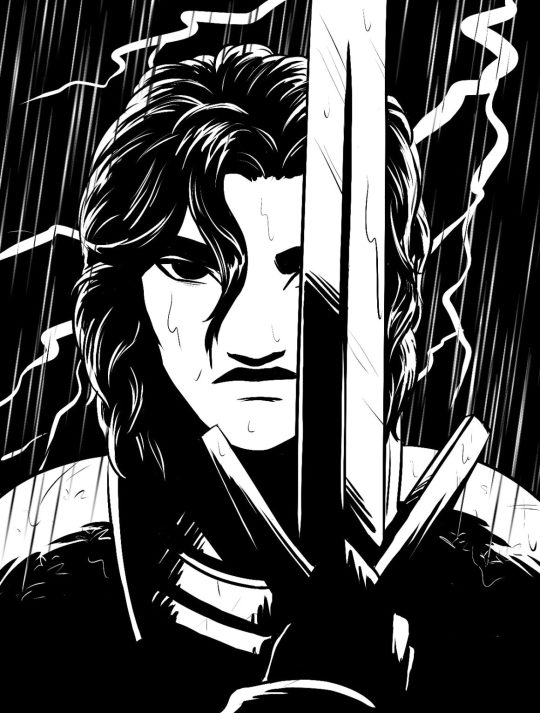
Q. What inspired you to make comics on Badass Woman?
Samby: Honestly, a lifetime of stereotyped representation. With a few exceptions, I often had trouble getting into media that was marketed to girls and women. It always felt like a caricature that I couldn’t even relate to. When I turned to men and boys’ entertainment, I got stories that were more my speed, but the female characters were still parodies from a male perspective, or a fantasy “ideal”.
When I was younger, I thought that was just the way things were. I even took my action-packed story ideas and changed the protagonists to guys, since that’s all I saw in the stories I liked. But college did a lot to help me spread my creative wings, and around the time I started seriously pursuing comics as a career, I thought, “Screw it. I’m going to make the stories I want to see. With BADASS WOMEN.”
I think a lot of other women had the same epiphany because soon after, I was finding all sorts of movies, shows, and comics with badass female protagonists I could get behind. It’s awesome to see the plethora of stories and experiences that have been represented since. The media’s really heading in a cool direction now.

Q. Is there any specific reason why you make Badass woman comics?
Samby: It started out just as self-indulgence. I wanted to see myself in stories and genres that, historically, I had not. And I wanted to flip the script. To call out the tropes that belittled and objectified women.
I think my motivations have grown from that though. Seeing so many people relate to my work, and their excitement at feeling represented adds fuel to my creative fire. There’s a real need for diverse representation without stereotypes. And though my main focus is badass women, I really hope that over time I can give everyone that joy of seeing themselves in a story they love.
“When I was younger, I thought that was just the way things were. I even took my action-packed story ideas and changed the protagonists to guys, since that’s all I saw in the stories I liked. But college did a lot to help me spread my creative wings, and around the time I started seriously pursuing comics as a career, I thought, “Screw it. I’m going to make the stories I want to see. With BADASS WOMEN.”
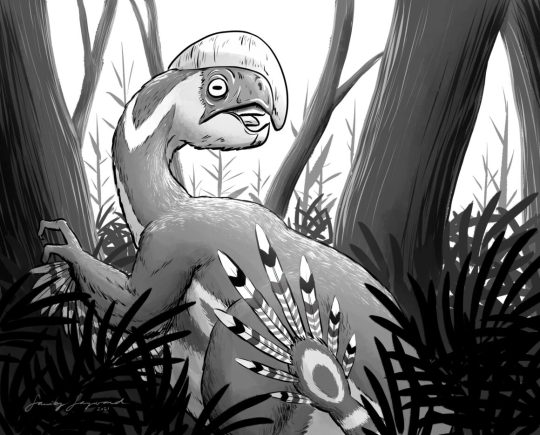
Q. What’s your comic “Daughters of Grimm” about?
Samby: “Daughters of Grimm” is a coming of age story about five young women aiming to be heroes in a world that thinks them better as damsels. Set a few generations after the original Grimm fairy tales, each Daughter follows in the footsteps of a hero they idolize until a “Grimm” vision weaves their narratives together for a larger quest.
There are action and intrigue, swords and sorcery, and a cute goat to balance all the badassery. And if women breaking the mould to fight monsters, rule kingdoms, and become heroes intrigues you, you can read the full story to date for free on Webtoon! The introduction is wrapped up and I’ll be launching the first story arc in the spring.
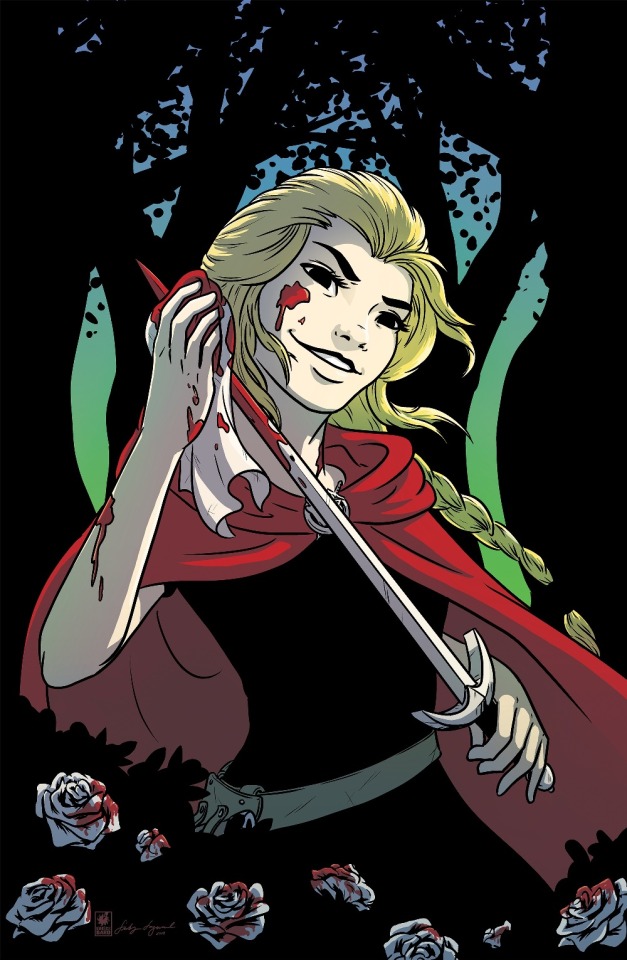
Q. Are there any real-life experiences in your life where you considered yourself badass?
Samby: It’s funny, I don’t think I’ve thought about it before. But I think the times I’ve felt most badass are the big milestones of my career — printing my first comic, tabling my first convention, participating in my first panel, and receiving fan art for my comic series. Each achievement just reinforces the fact that I’m doing it. I’m really a comic pro!

Q. Do you always work on your personal projects or do you take clients’ work as well? If yes, what is it like to work with a client and how much freedom do you have in such projects?
Samby: When it comes to comic projects, I tend to stick to my personal work. But I have done some illustration work and variant covers for other comic creators. Honestly, those projects have been a blast! All my clients have given a lot of creative reigns, just giving some character references and a concept to work off of. And as fellow creators with similar goals, we often end up vibing and helping each other out with cross-promotion afterwards.
I’ll add though, I’m absolutely open to doing comic page work for the right project! I’m pretty hyped about a project pitch I got the other day from a client. It’s all the genres I’ve wanted to do and haven’t gotten to yet. We’ll just have to see if our schedules line up when the script is done.
Q. What’s the strongest female protagonist you have ever created in your comics and what’s the inspiration behind it?
Samby: So far, I think the strongest protagonist I’ve created is Emil from “Daughters of Grimm”. Not only can she take down a sea dragon solo, but also, she’s managed the task of posing as her brother for years! I think it takes a lot of internal strength to hide such a large part of yourself for so long.
Her character and struggle are largely inspired by my own experiences, both with gender roles and with the broader sense of trying to be myself while fitting in with others’ expectations.

Q. What are the projects you are currently working on or looking forward to work?
Samby: I’m currently writing the first main story arc of my fairytale series, Daughters of Grimm! Until now, the series has been made up of little short stories that introduce the world and characters. So it’s really exciting seeing all the characters and plots coming together. I can’t wait to finish it up and share it!
I’m also working on a YouTube channel and book to share some of the story planning and production techniques I’ve picked up over the years. Though I’ll be honest, I’m not sure when it’ll be ready. It’s a passion project I’m building between comic and commission work. But I’m definitely hoping the YouTube channel will be online soon(ish)!
Q. What is one tip or advice would you give to upcoming comic artists?
Samby: My advice is two-fold:
Don’t be afraid to get started, but also don’t be afraid to ‘finish’.
I think beginning artists get told that first bit a lot. “Make something! Just do it! You’ll figure things out along the way.” But in my experience, starting is much easier than finishing. And it’s finishing a project that really levels up your skills and lets you learn something.
My art leveled up more in my time outside of college than in it because in college I got so focused on perfection that I never finished anything. I never learned how to get that polished product.
0 notes
Text
Rita Lux: Fantasy Art that Takes You Back to Your Childhood

Ritalux’s fantasy art and character development is filled with her childhood experiences!

What happens when you grow up in an extremely creative environment, with your mom being an animator for all the big studios? You become an artist, or even better, a fantasy artist! Raised in Burbank, CA, Ritalaux’s childhood experiences and exposure to drawing and comics motivated her to pursue an art career. She then went on to study illustration and character design at Otis College. Her early career days included storyboarding for animations and commercials before moving on to illustrations and concept art for toy companies and then video games. Along with Disney, Ritalaux’s clients include Riot games, Mattel, Hasbro, and Illustration Entertainment.
Q. What does fantasy art mean and what inspired you to create illustrations in this category?
Rita: Fantasy art is I think anything magical and out of the ordinary. Everyone thinks fantasy is a small genre, but it’s actually visible in most cult classic and popular classic entertainment. Most comic books, popular sci-fi movies are fantasies. It’s the most fun entertainment genre I think, so that’s what drew me to work in this realm.

Q. Did your childhood exposure to creativity encourage you to become an artist? Tell us about those childhood memories.
Rita: I grew up in a home where art and entertainment were everywhere. My mother was an animator for Disney and worked for a lot of other popular animation studios. The Disney animation building was our daycare when my sister and I were kids. When we were in middle school (and outgrew the daycare) we would walk around and wander the Disney animation art department, play video games and hang out in my Mom’s office after school every day. I would look at all the concept art and storyboarding art on the walls and wanted to work on that kind of art when I grew up. When I was a kid, I was a big comic collector. From a young age, I would copy comic panels and learn to draw in that style. I was always encouraged by my parents and my mom’s animator friends to pursue a career in entertainment if I chose to. They would give me drawing tips as well as a kid, and that helped me a lot. Because they encouraged me to do art, they gave me the confidence to do it professionally. My mom would also give me solid professional advice so I was prepared for what would be necessary.

Q. Do you think comic books and superheroes have an influence on your style of creating illustrations?
Rita: Yes totally. I collected comics as a kid and was highly influenced by superheroes. I learned how to draw from comic books because they hire the best illustrators in the world to create them. Comic art is super under-rated in my opinion as the artists have to completely realize and interpret everything. The idealized figures also got me into bodybuilding, just like Frank Frazetta. He kind of emphasized the idealized fit body for a new generation, looking at the advancements in bodybuilding and being fit himself. I’m just a lean tall female myself, not even close to a fitness competitor, but it got me interested at a young age in being fit for life. I think the comic style of strong figures is one of the more empowering role models for me. The inclusivity of so many different types of characters in X-Men for example has been super cool.

Q. How do you go about creating illustrations as per the brief given?
Rita: I sit and think first and take notes. Then move on to sketching the chosen idea. Sketching and ideation are the foundations of any successful illustration, so if I’m designing something, the idea has to be solid first. I go through several rounds of sketching before I choose a direction. Then refine a line drawing, then color/tone. Then add effects after.

Q.Which mediums or software do you use to create the fantasy illustrations?
Rita: Photoshop primarily.

Q. How was your experience working with Disney and Riot games like?
Rita: I worked doing freelance illustration for Disney for the consumer products department. They wanted to do a fashion illustration book with multiple artists to interpret the Princesses in a high fashion style. It was a fun challenge. Riot Games was a great challenge for me, as I was designing characters for “Legends of Runeterra.” It pushed me to understand how to design masculine fantasy characters better. I was learning a lot the whole time and it was really fun. I worked for them for 6 months and had some varied briefs. It helped me understand what is popular in the fantasy games genre.

Q. Tell us about your experience with Mattel Inc. for Barbie.
Rita: I have been working for Mattel for around 10 years now! I worked as the in house illustrator, where I helped to evolve Barbie’s look as the company changes Barbie’s look every 5 years or so for consumer products. I was a concept artist, illustrator, and retoucher for the brand. A few years ago, they came out with “Barbie Princess Power”, a superhero Barbie movie. They wanted to explore a style that had a comic feel to it. I begged them to let me take a stab at developing what that style could look like. The brand managers loved what I drew, and we started developing a style guide for the movie (for consumer products).

The movie is produced in 3d by Rainmaker entertainment and was already developed. They usually create a 2d art style and create assets to supplement the movie release. I had a passion for this, as I always thought of Barbie as a girl’s action figure in being an adult. And since Barbie represents “be anything you want to be” I thought she should look stronger, more vibrant, with fuller cheeks, more muscle tone, and more fun! Barbie before this had a thin, fashionable figure and a drab flat expression. So I hoped to bring to the brand more fun and vibrant look to her.
“At Mattel, they used to call me “Barbie’s plastic surgeon” because I would beautify all the art of the brand, but I preferred to be called “Barbie’s personal trainer”.

The head of the brand liked this new style so much that they changed ALL of the consumer products to this Comic style Barbie for the time being! So that means, the graphic illustrations you see on Barbie doll packaging is still this style I helped create! Hopefully, they keep this style for another few years, as it’s been her core art style for the last 3 years. This was a career highlight for me, as my experience in the animation world, and comic art upbringing helped me make Barbie look strong and more animated. At Mattel, they used to call me “Barbie’s plastic surgeon” because I would beautify up all the art of the brand, but I preferred to be called “Barbie’s personal trainer”. In my mind, if Barbie can surf, sail, and be a pilot or any other cool job, she had better look capable!

Q. What is your ultimate goal as an artist?
Rita: I like to develop my own intellectual properties, animated series, or video games specifically. So it would be a big goal to see my original characters and story in collaboration with a great team be developed and released with a good response.

Q. According to you what are the key features of a perfect client?
Rita: A perfect client is one that knows what they want, likes what I provide with minimal notes, and pays quickly. Most clients don’t know what they want specifically, as it is my job to help them discover that. So just a willingness to work collaboratively and be communicative of their goals and feedback is nice to work for.
0 notes